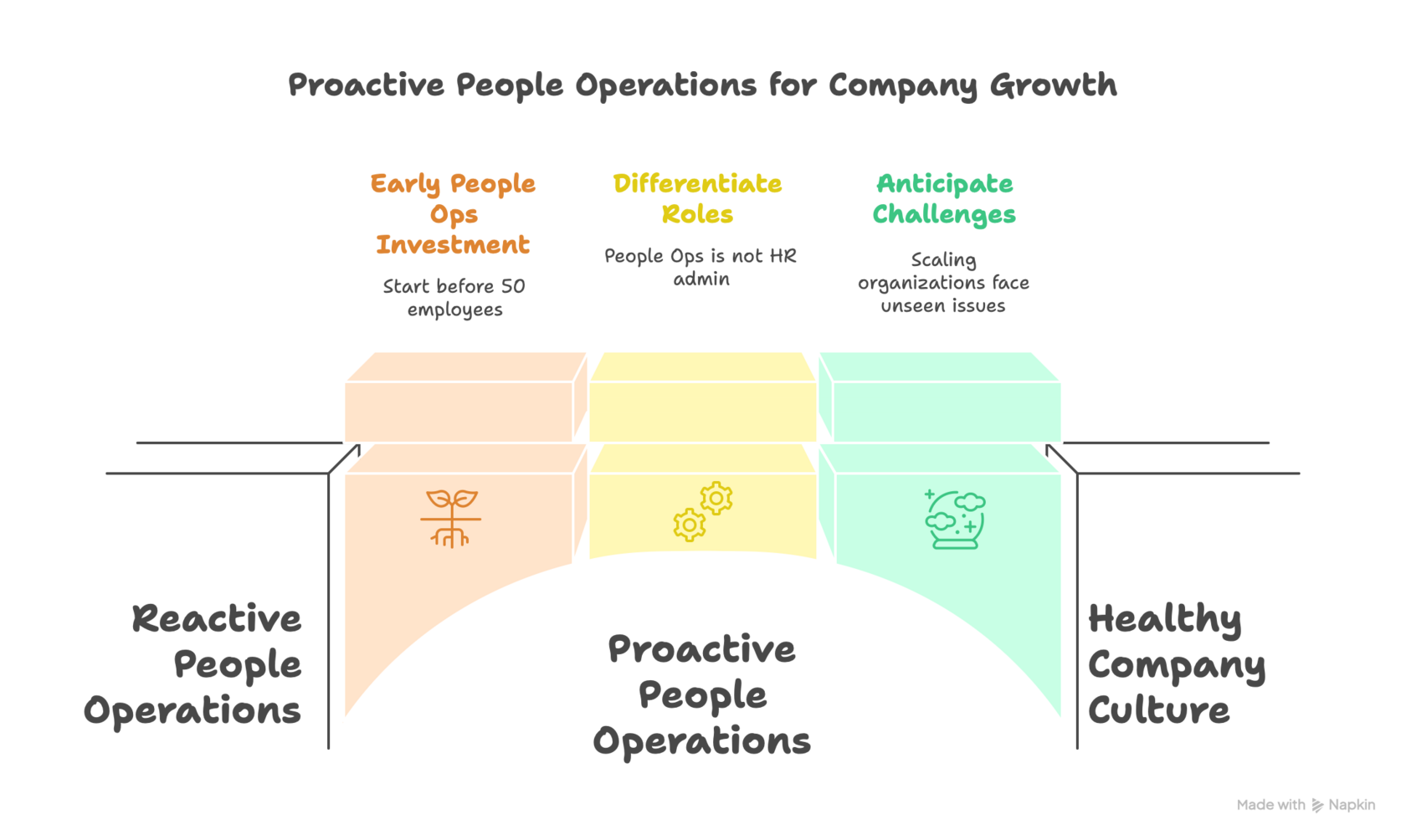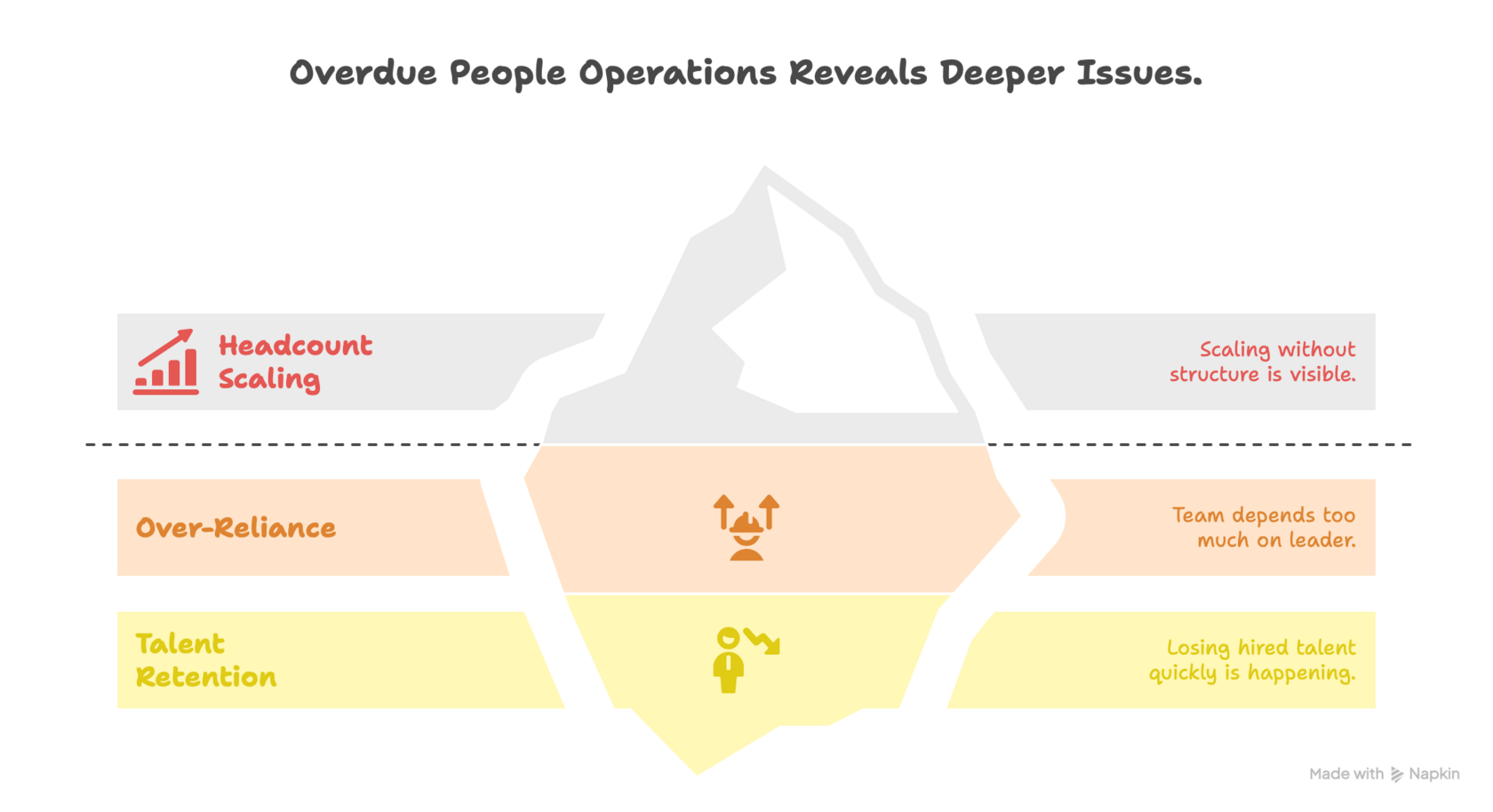🕰️ When Should You Bring in People Ops?
Startup timing is everything — especially when it comes to your first People hire.
Bring them in too early, and you burn cash on culture workshops before your team even gels.
Bring them in too late, and you're playing cleanup on toxic dynamics, burned-out hires, and chaotic onboarding.
So — when’s the right time?
This article breaks it down for founders and early leaders navigating the messy middle.
🚨 Why Timing Your People Ops Hire Matters
You wouldn’t launch product without knowing who it’s for.
You shouldn’t scale headcount without knowing what kind of team you’re building.

And yet: most founders delay People Ops until they hit a wall — often after:
- 3+ team members churn unexpectedly
- a top performer burns out or quits silently
- a key hire derails the culture you were proud of
People Ops isn’t just policies. It’s how you build clarity, cohesion, and culture — early, before cracks widen.
🧠 What Founders Often Get Wrong
Mistake #1: Equating People Ops with HR Admin
Running payroll isn’t People Ops. Neither is sending out contracts.
Mistake #2: Hiring after you hit 50 people
By then, the team already formed habits — good or bad. Culture calcifies.
Mistake #3: Waiting for “issues” to surface
If your org is scaling, you already have people challenges — whether you see them or not.

✅ The Right Time to Bring in People Ops
A good rule of thumb:

🎯 10–25 employees
Bring in fractional People Ops support.
Why?
- You're onboarding more than 2 people per quarter
- Culture starts drifting across functions
- You're hearing “we need clarity” or “what are the expectations here?”
🚀 25–50 employees
You likely need a full-time People Operator or Talent Partner.
This person (or partner) helps:
- Scale hiring with consistency
- Structure onboarding
- Build foundational rituals (e.g. feedback, reviews, values-in-action)
- Prevent founder bottlenecks
💡 What Great People Ops Adds
⚠️ Founders: Ask Yourself

- Are we scaling headcount without structure?
- Is the team relying too heavily on me for decisions or context?
- Are we hiring A-players… and losing them 6 months in?
If yes — you’re likely overdue for People Ops.
🛠️ You Don’t Have to Hire Full-Time (Yet)
A modern People Ops partner can plug in for:
- Hiring system design
- First onboarding blueprint
- Performance calibration
- Culture narrative building
🔁 Related Reading
🎯 Final Thought
Great startups don’t “install” People Ops like a tool.
They grow into it deliberately — layering in support that scales with the team.
Don’t wait until it breaks. Build it right — at the right time.
👉 Interesting? Let’s Talk
